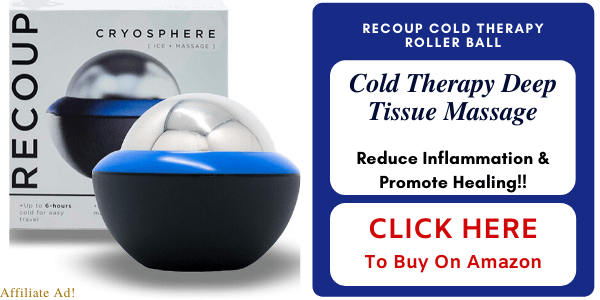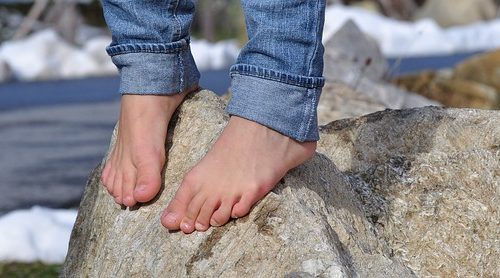When dealing with an injury, there is often confusion as to whether it is better to apply heat or cold to the affected area. Plantar Fasciitis is no exception, and depending on which you apply, could help or hinder your recovery. We aim to clear things up for you in that department.
Should You apply heat or ice to Plantar Fasciitis? In the ACUTE stages of plantar fasciitis, ICE should be applied to the affected area. In the CHRONIC stages of plantar fasciitis, HEAT should be applied to the affected area.
We will now look further into the reasons for when to use hot or cold treatments to aid recovery of your plantar fasciitis condition.

When should I use Ice on Plantar Fasciitis?
When you first injure or feel the initial pain of plantar fasciitis, you are in the acute stage of the condition, or the inflammation stage. This is when icing is most effective as it helps reduce both swelling and inflammation in the affected area.
How Should I Apply The Ice?
Ice can be applied to the affected area in a variety of ways, such as:
- Ice pack
- Cold compress
- Ice Slippers / socks
- Bag of Frozen Peas
Caution! When applying ice to the area, be sure to wrap the method of application in a towel and not directly to the skin, to prevent ice burn.
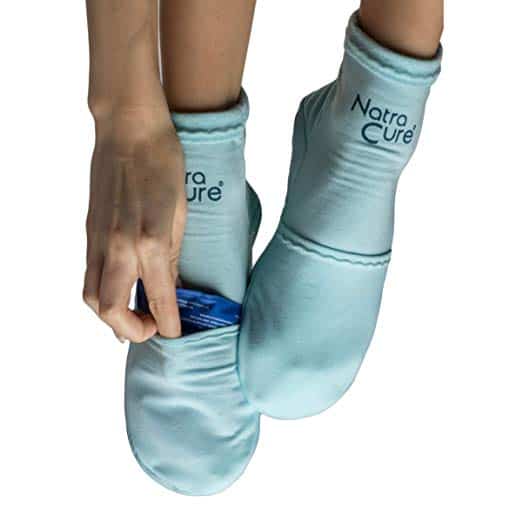
Ice Socks
These ice socks allow cold ice packs to be slipped into sleeves to cool the affected areas of the foot.
See them on AMAZON
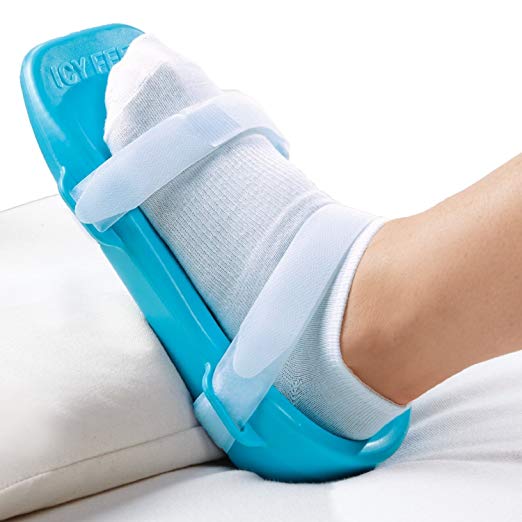
Ice Slippers
These ice slipper allow cold ice packs to be strapped to the foot.
See them on AMAZON
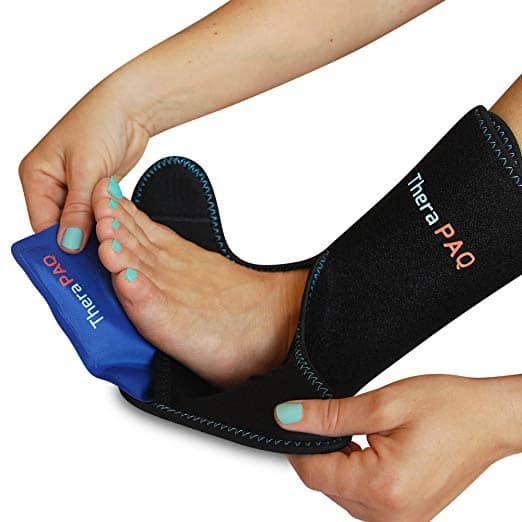
Ice Wrap
This foot wrap allows ice packs to be applied to the affected areas.
See them on AMAZON
How Often Should I Apply The Ice?
The ice pack should be applied to the affected area for a period of 15 mins every 2 – 4 hours.
When Do I Stop Applying Ice?
Ice should be applied for the first 24 – 48 hours after the initial pain or injury. After 48 hours, further icing is likely to be ineffective unless re-injury occurrs.
Should I Do More Than Just Ice The Area?
Yes, the acronym R.I.C.E should be adopted when recovering from the acute stages of plantar fasciitis.
- Rest
- Ice
- Compress
- Elevate
Doing the combination of these principles will give you the best chance of a speedy recovery.

Icing Summary
Following the icing and RICE therapy after the initial injury or onset of pain, can really help improve the recovery rate of plantar fasciitis.
After 48 hours, icing will become less effective, however you should continue with the Rest & Compression.
You should see significant improvement within a week or two.
If you re-injure the area, or the pain returns, then repeat the whole process once again.
If after several weeks your condition has not improved, you may have entered the chronic stages of plantar fasciitis and will want to consider trying the heat method that will be explained below.
When should I use Heat on Plantar Fasciitis?
If you have been suffering with plantar fasciitis for a period of weeks or more, you have likely entered the chronic stage of the condition.
This means that you have moved beyond the minor tear and inflammation phase and entered the degeneration phase where the plantar fascia damage has worsened.
How Should I Apply The Heat?
Heat can be applied to the affected area in a variety of ways, such as:
- Heating Pad
- Hot Towels
- Hot Water Bottle
- Heated Wheat Bag
Caution! When applying heat to the area, be sure to avoid burns by not having the application too hot!
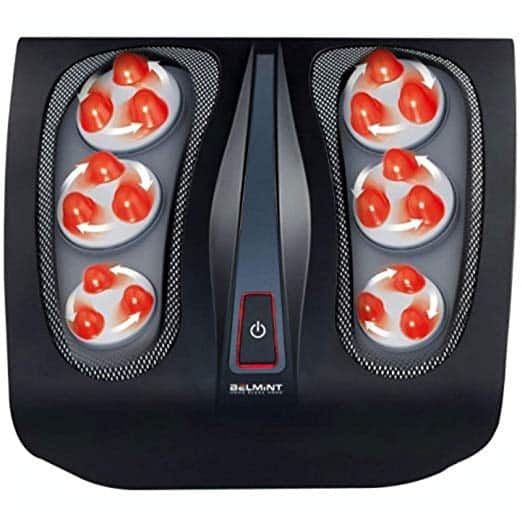
Heated Massage
This heated deep kneading massage will promote recovery.
See on AMAZON
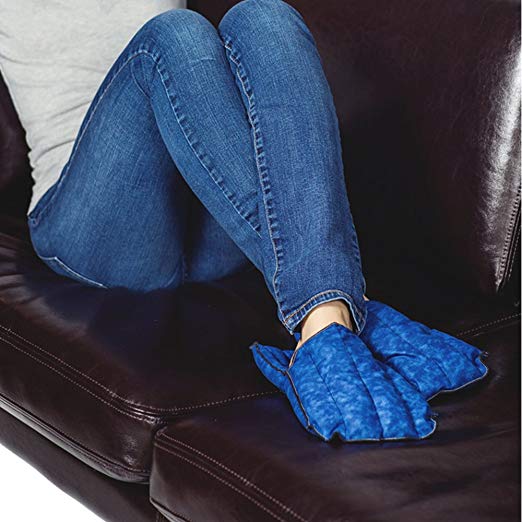
Micro Slippers
These slippers heat in the microwave to apply heat.
See them on AMAZON
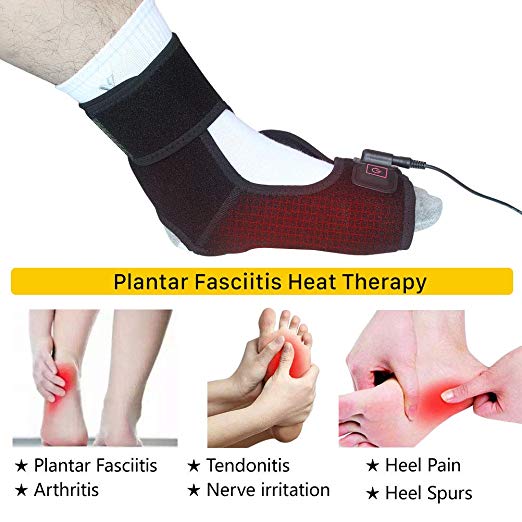
Wired Heated Wrap
3 Heat Setting Controls on this plantar fasciitis wrap.
See them on AMAZON
Why Does Heat Therapy Work?
Applying heat to the area increases blood flow and relaxes the muscles. It also loosens the damaged tissues to promote healing.
When Should Heat Not Be Applied?
You should never apply heat during the acute phase of plantar fasciitis, to inflammed areas, or to new injuries such as sprains or strains.
Should I Do More Than Just Heat The Area?
Massage is an effective compliment to heat heat therapy.
By massaging the affected area, you are helping to break up the damaged tissues and promote healing, as well as increasing blood flow to the area.
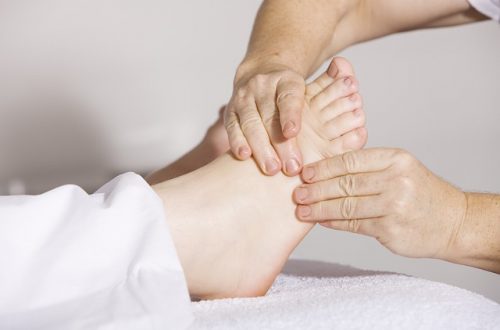
Summary
Hot and cold therapy both have their place in aiding plantar fasciitis recovery.
In the early stages, icing will help reduce swelling, bruising and inflammation of the area. Rest and compression over the coming weeks will also greatly reduce the recovery time.
If after a period of time your plantar fasciitis has not gone away, then you may want to try heat therapy.
Heat therapy will relax the damaged tissues, allowing the increased blood flow to promote healing.
Both hot and cold therapy results will differ with each person and their ailments, however they are worth trying in your persuit of pain free feet.
Take a look at our other related articles within the site:
How to eliminate the constant pain of Plantar Fasciitis



